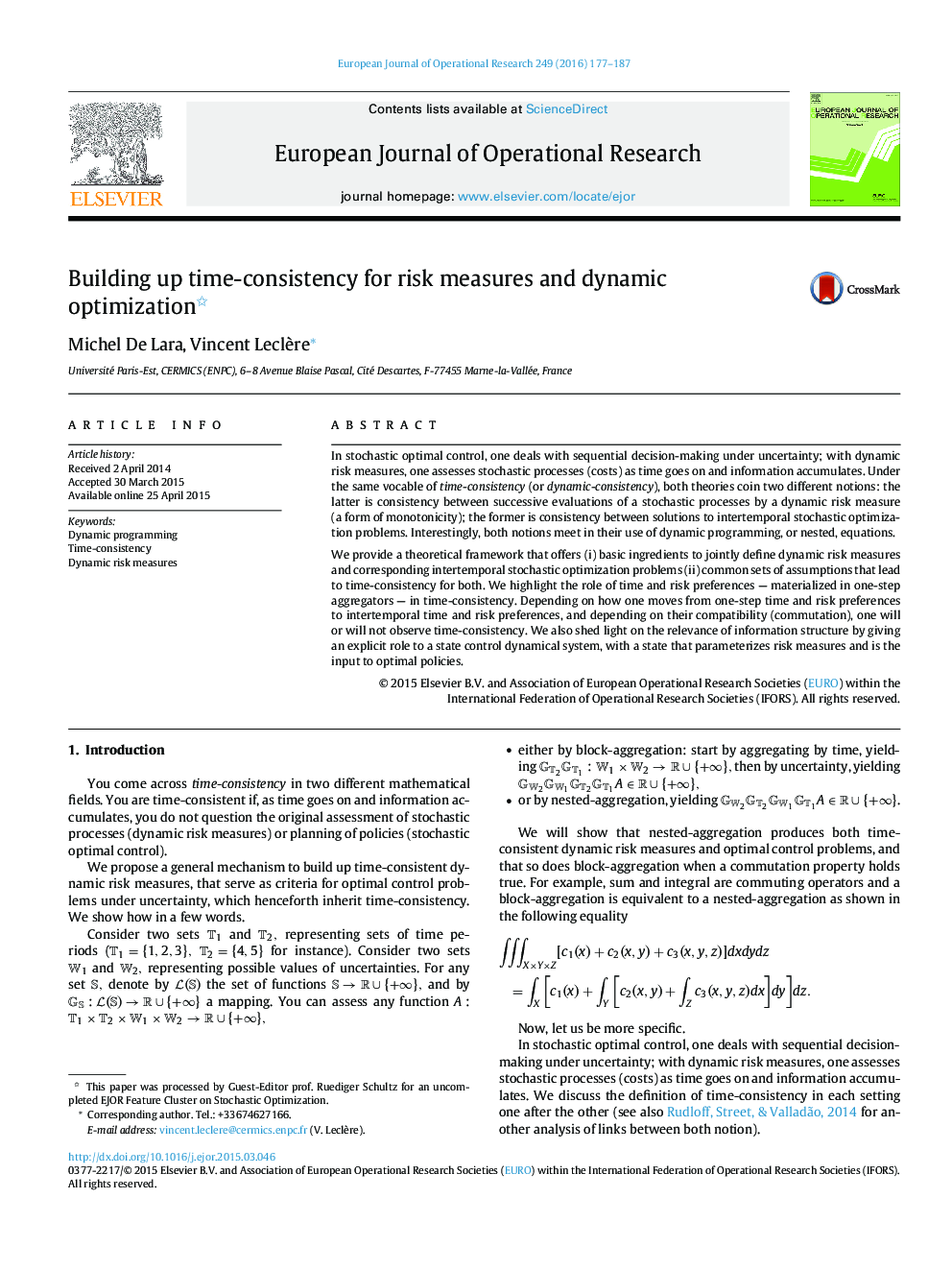| کد مقاله | کد نشریه | سال انتشار | مقاله انگلیسی | نسخه تمام متن |
|---|---|---|---|---|
| 479433 | 1445990 | 2016 | 11 صفحه PDF | دانلود رایگان |
• We give a framework for stochastic optimization problems and dynamic risk measures.
• We provide common sets of assumptions that lead to time-consistency for both.
• Main assumptions are decomposability, commutation and monotonicity of aggregators.
• We give examples of applications considering non-additive costs.
In stochastic optimal control, one deals with sequential decision-making under uncertainty; with dynamic risk measures, one assesses stochastic processes (costs) as time goes on and information accumulates. Under the same vocable of time-consistency (or dynamic-consistency), both theories coin two different notions: the latter is consistency between successive evaluations of a stochastic processes by a dynamic risk measure (a form of monotonicity); the former is consistency between solutions to intertemporal stochastic optimization problems. Interestingly, both notions meet in their use of dynamic programming, or nested, equations.We provide a theoretical framework that offers (i) basic ingredients to jointly define dynamic risk measures and corresponding intertemporal stochastic optimization problems (ii) common sets of assumptions that lead to time-consistency for both. We highlight the role of time and risk preferences — materialized in one-step aggregators — in time-consistency. Depending on how one moves from one-step time and risk preferences to intertemporal time and risk preferences, and depending on their compatibility (commutation), one will or will not observe time-consistency. We also shed light on the relevance of information structure by giving an explicit role to a state control dynamical system, with a state that parameterizes risk measures and is the input to optimal policies.
Journal: European Journal of Operational Research - Volume 249, Issue 1, 16 February 2016, Pages 177–187
